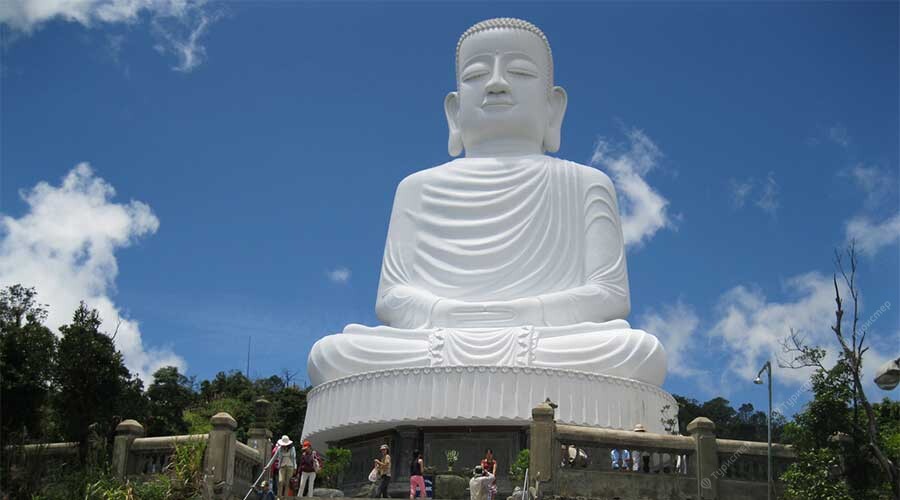
Exploring Lumbini: The Birthplace of Buddha
Posted on April 3, 2024
Introduction
Lumbini, located in the Rupandehi District of Nepal, is a UNESCO World Heritage Site and one of the most sacred places in Buddhism. It is the birthplace of Siddhartha Gautama, who later became the Buddha. This ancient site, surrounded by serene beauty and historical monuments, offers a profound spiritual experience for pilgrims and travelers alike. In this blog, we will explore the rich history, significant landmarks, and spiritual essence of Lumbini, making it an essential destination for anyone interested in Buddhism.
The Historical Significance of Lumbini
Birthplace of the Buddha
Lumbini holds immense historical and spiritual importance as the birthplace of Siddhartha Gautama around 563 BCE. Born to Queen Maya Devi and King Suddhodana, Siddhartha’s birth is marked by a sacred garden in Lumbini, making it a revered site for Buddhists worldwide.
Archaeological Discoveries
The site’s significance was confirmed by archaeological excavations, revealing numerous ancient structures, inscriptions, and artifacts. The Ashoka Pillar, erected by Emperor Ashoka in the 3rd century BCE, bears an inscription that identifies Lumbini as the birthplace of the Buddha, further solidifying its historical authenticity.
Key Landmarks in Lumbini
Maya Devi Temple
The Maya Devi Temple, named after Buddha’s mother, is the central attraction in Lumbini. This ancient temple, dating back to the 3rd century BCE, houses the exact spot where Queen Maya Devi gave birth to Siddhartha. The temple complex includes the sacred pond where Maya Devi is said to have bathed before giving birth and the Marker Stone indicating the precise birthplace.
The Ashoka Pillar
The Ashoka Pillar, one of many erected by the Mauryan Emperor Ashoka, stands near the Maya Devi Temple. This sandstone pillar, inscribed with Brahmi script, commemorates Ashoka’s visit to Lumbini and his reverence for the Buddha. The pillar is a symbol of the spread of Buddhism and Ashoka’s dedication to promoting the Buddha’s teachings.
Sacred Garden
The Sacred Garden, encompassing the Maya Devi Temple and the Ashoka Pillar, is a peaceful area filled with ancient ruins, stupas, and monasteries. It offers a tranquil environment for meditation and reflection, allowing visitors to connect deeply with the spiritual essence of the site.
International Monastic Zone
Lumbini is also home to the International Monastic Zone, a sprawling area with monasteries and temples built by various Buddhist communities from around the world. Each monastery reflects the unique architectural styles and cultural heritage of the respective countries, making the zone a vibrant mosaic of global Buddhist traditions.
Spiritual Practices in Lumbini
Pilgrimage and Meditation
Lumbini attracts thousands of pilgrims and spiritual seekers annually. Visitors engage in meditation, chanting, and walking meditation around the Sacred Garden. These practices help individuals connect with the Buddha’s birthplace’s spiritual energy and enhance their own spiritual journeys.
Festivals and Celebrations
Lumbini hosts several important Buddhist festivals, including Buddha Jayanti, which celebrates the birth, enlightenment, and death of the Buddha. These events draw large crowds and feature ceremonies, rituals, and teachings by prominent Buddhist monks, offering a unique opportunity to experience the local culture and religious fervor.
The Modern Relevance of Lumbini
A Global Spiritual Hub
Today, Lumbini serves as a global spiritual hub, attracting not only Buddhists but also people of various faiths interested in the teachings of the Buddha. The site’s development projects, such as the Lumbini Development Trust, aim to preserve and promote its historical and spiritual heritage while providing modern amenities for visitors.
Educational and Cultural Center
Lumbini is also an educational and cultural center, with institutions like the Lumbini International Research Institute offering courses and research opportunities in Buddhist studies. These initiatives contribute to a deeper understanding of Buddhism and its historical context, attracting scholars and students from around the world.
Conclusion
Lumbini, the birthplace of the Buddha, is a site of immense historical, spiritual, and cultural significance. Its ancient landmarks, tranquil environment, and rich heritage make it a must-visit destination for anyone interested in Buddhism. As a place of pilgrimage, meditation, and learning, Lumbini continues to inspire and guide individuals on their spiritual paths. Whether you are a devout Buddhist, a spiritual seeker, or a history enthusiast, a visit to Lumbini promises a profound and transformative experience. It is a journey to the very origins of Buddhism, where the life of Siddhartha Gautama began and where his teachings continue to resonate across the world.
